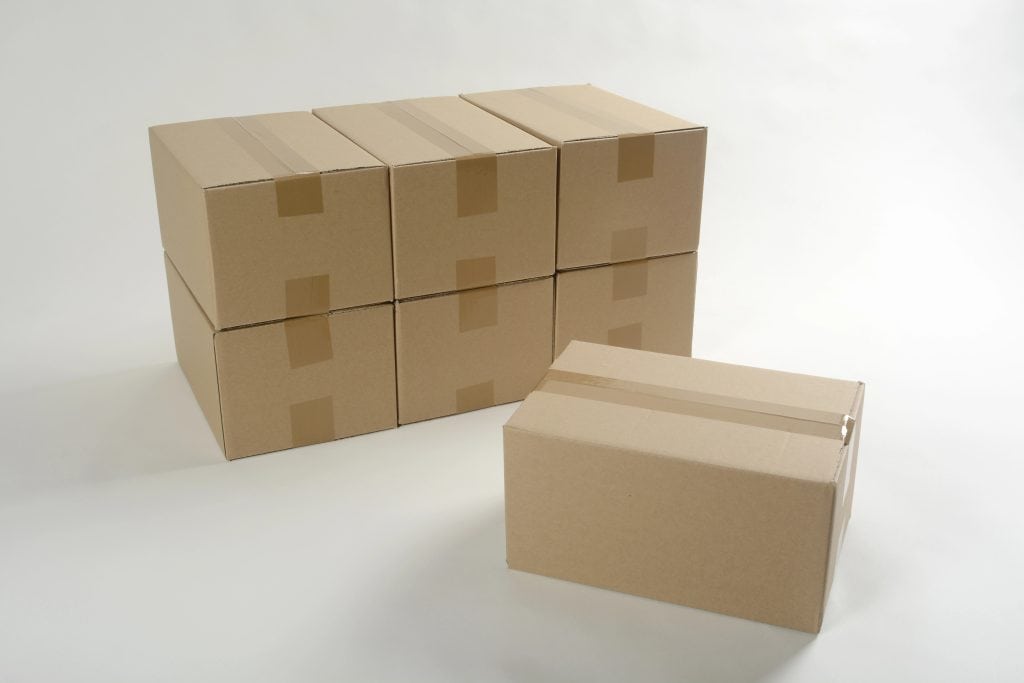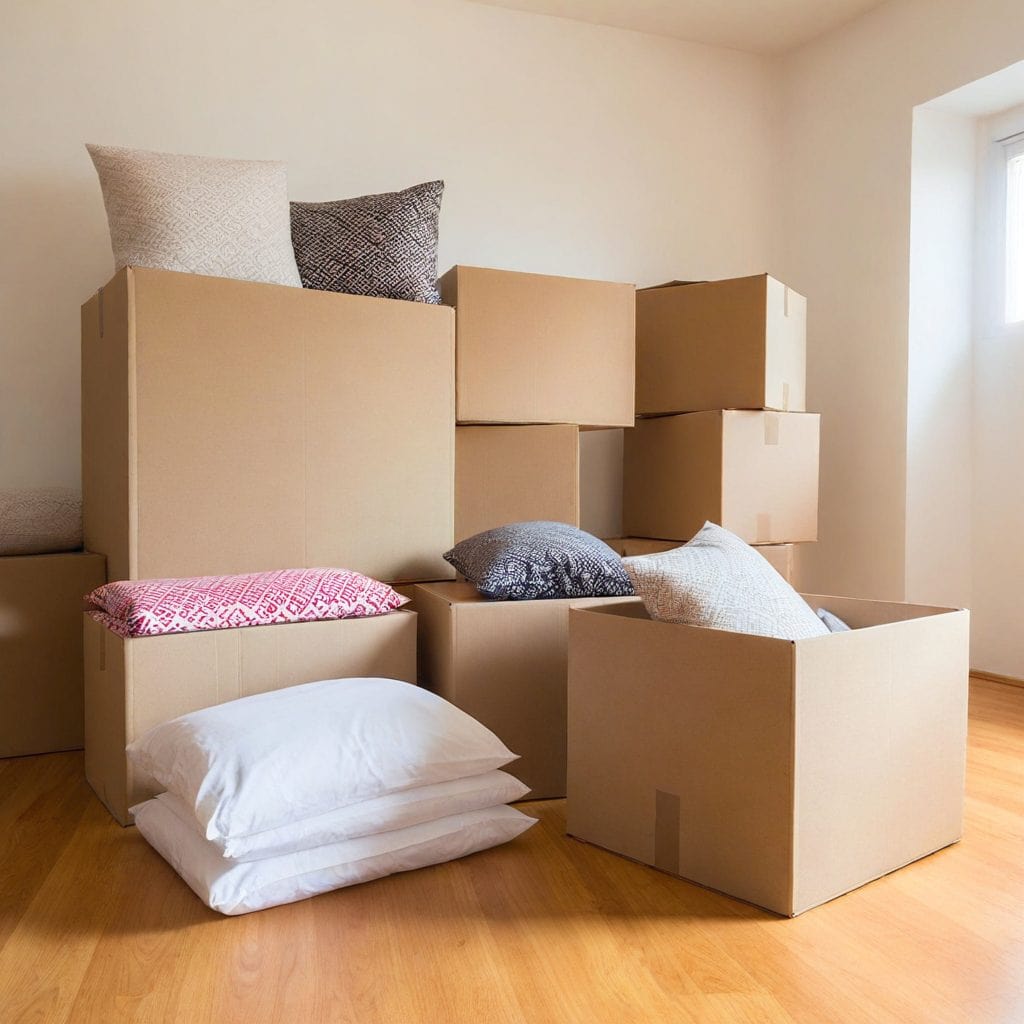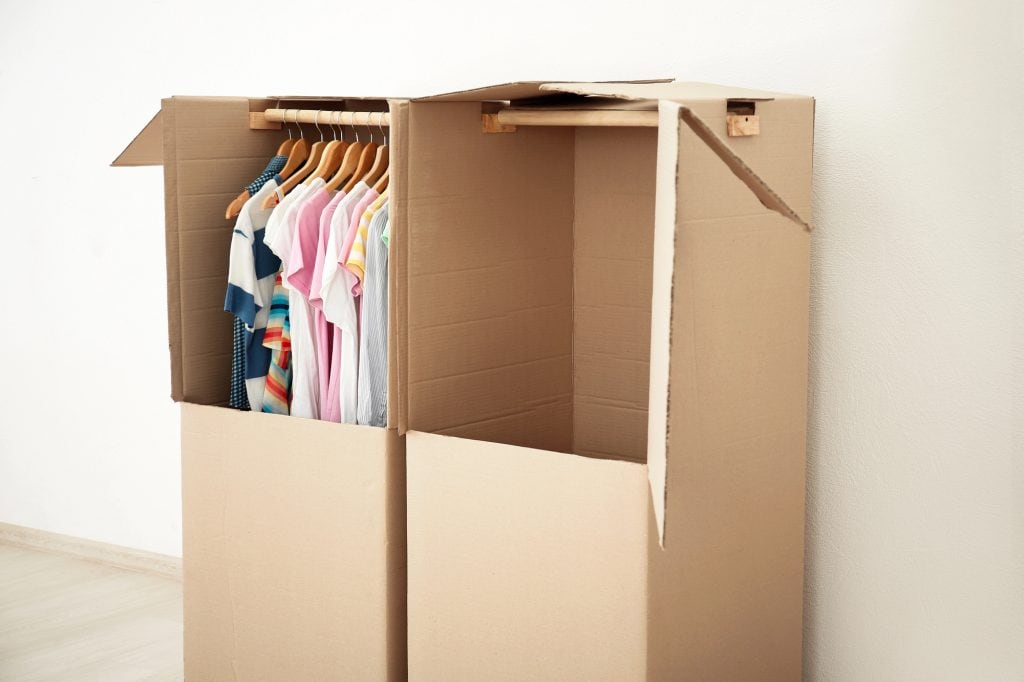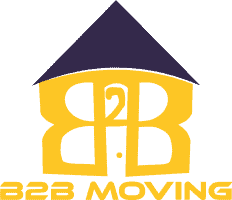Packing for a move can feel like a game of Tetris—what goes where, and why? Understanding the purpose of each size and type of moving box can save you time, reduce stress, and help ensure your belongings arrive safely. Here, we break down everything you need to know about efficiently selecting and filling moving boxes. Is the thought of packing still daunting? No worries—B2B Moving Company is here to help with professional packing services!
Small Boxes
Small moving boxes typically measure 12″ x 12″ x 16″ and have a weight limit of up to 50 pounds. They are perfect for heavy items that don’t take up much space. Think of books, tools, canned goods, and delicate small appliances. These items can get heavy fast, so smaller boxes help manage the weight, making them easier to lift and carry.

Use small boxes for:
- Books and DVDs
- Canned goods and pantry items
- Hand tools and hardware
- Small electronics like speakers or tablets
- Fragile items wrapped in bubble wrap
B2B Moving Pro Tip. Use small boxes for fragile items and pad them generously with packing paper or bubble wrap to avoid breakage.
Medium Boxes
Medium boxes, the jack-of-all-trades, typically measure 18″ x 18″ x 16″ and have a weight limit of up to 65 pounds. These boxes are the most versatile and widely used moving boxes. These boxes can hold a mix of moderately heavy and bulky items, making them great for packing up your kitchen, bathroom, and bedroom.

Medium boxes are best for:
- Kitchenware (pots, pans, Tupperware)
- Bathroom essentials (towels, toiletries, hair dryers)
- Toys and board games
- Decorative items like vases and candles
B2B Moving Pro Tip. Don’t overload medium boxes with heavy items like books; balance the weight by adding lightweight items like towels or linens.
Large Boxes
Large boxes, ideal for light but bulky items, typically measure 18″ x 18″ x 24″ and have a weight limit of up to 70 pounds. They are ideal for packing bulky but lightweight items. They accommodate things that take up space but don’t weigh much, preventing overloading.

Use large boxes for:
- Linens and bedding
- Pillows and comforters
- Clothing (if not using a wardrobe box)
- Oversized soft toys or stuffed animals
B2B Moving Pro Tip. Label large boxes clearly to ensure they’re placed in the correct room. Items like bedding are often unpacked first, so make these easy to locate.
Specialty Boxes

Dishware Packs
Dishware packs are essential for ensuring your fragile kitchen items survive the move unscathed. They have dividers to securely hold dishes, glasses, and other fragile kitchenware and padding for maximum protection.
What to pack in dishware packs:
- Plates, bowls, and saucers
- Glassware and stemware
- Mugs and cups
B2B Moving Pro Tip. Wrap each piece individually in packing paper before placing it in the box to add an extra layer of protection.
Wardrobe Boxes
Wardrobe boxes are a lifesaver for preserving wrinkle-free clothing during a move. They mimic the functionality of your closet, making unpacking easier. These tall, sturdy boxes have a hanging bar to transport clothes without folding.
What to pack in wardrobe boxes:
- Hanging clothes (shirts, dresses, suits)
- Coats and jackets
- Belts and scarves
B2B Moving Pro Tip. Use the bottom of the box for shoes or accessories to maximize space.
Picture and Mirror Boxes
Picture boxes are customizable to fit various sizes and provide ample protection for delicate, glass-covered items. They are flat, adjustable, and designed to pack framed pictures, mirrors, and artwork.
What to pack in picture boxes:
- Framed photos
- Wall mirrors
- Canvases and artwork
B2B Moving Pro Tip. Tape an “X” across the glass to minimize movement and wrap the item in bubble wrap before placing it in the box.
Art Boxes
Art boxes are ideal for packing high-value or sentimental pieces that require extra care. They can also be used to transport sculptures, collectibles, and other valuable or irregularly shaped pieces.
What to pack in art boxes:
- Sculptures
- Collectible items
- Oversized or delicate decorations
B2B Moving Pro Tip. Use packing peanuts or foam to fill empty spaces and keep the item secure during transit.
TV and Electronics Packing Boxes
It would be best to have something to transport delicate electronics and flat-screen TVs safely. Due to their size, shape, and sensitivity, moving them can be tricky. TV and electronics packing boxes provide maximum protection, with reinforced edges and adjustable padding to keep devices secure during transit.
What to pack in TV and electronics boxes:
- Flat-screen TVs
- Computer monitors
- Gaming consoles
- Home theater systems
- Small appliances like printers or scanners
Packing Tips for TVs and Electronics
- Original Packaging. If you have the original boxes for your electronics, use them! They’re specifically designed for the item’s dimensions and provide optimal protection.
- Wrap Cables. Remove cables, wrap them individually, and secure them with twist ties or zip ties. Place all wires in a labeled plastic bag.
- Use Foam Inserts. TV and electronics boxes often come with foam inserts to cushion the device. Position the foam securely to minimize movement.
- Screen Protection. Place a soft cloth or screen protector over flat-screen displays before wrapping them in bubble wrap.
- Label as Fragile. Clearly mark the box as fragile and specify which side should face up to prevent mishandling.
B2B Moving Pro Tip. Take a picture of your electronics’ cable setup before unplugging them to make reassembly easier at your new home.
Leave the Packing to Us
Packing can be one of the most time-consuming and stressful parts of moving, but it doesn’t have to be. B2B Moving Company’s professional packing services ensure your belongings are expertly packed and safely transported. Whether it’s your everyday essentials or cherished heirlooms, we take the guesswork out of packing. You can trust us to treat your items as if they were our own.
Final Tips for Maximizing Your Moving Boxes
- Don’t Overpack. Boxes that are too heavy are harder to move and likely to break.
- Label Everything. Clearly mark boxes with contents and intended room for easy unpacking.
- Use Packing Materials. Protect belongings with bubble wrap, packing paper, or foam peanuts.

Request Your Free Moving Estimate
Ready to make your move stress-free? Whether you want to handle packing yourself or let B2B Moving Company take the reins, we’re here to help every step of the way. Browse our blog for more expert moving and packing tips, or request your free moving estimate today. Let’s get moving!
